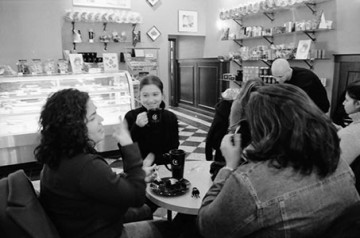 By Shawna Stanwood, PhD Candidate in Jefferies Lab, CBR
By Shawna Stanwood, PhD Candidate in Jefferies Lab, CBR
It is a word that will come up repeatedly throughout one’s time as a student, post-doctoral fellow, research associate, scientist, and beyond: networking. This skill serves as a useful tool to establish contacts, build connections, and develop professional relationships. Although the benefits of networking are evident, merely mentioning the word can lead to increased stress for some people.
One way to potentially lower this stress is to approach networking differently. Sweta Rajan, the Manager of Training Programs at the Centre for Drug Research and Development (CDRD)*, proposed that the goal of networking is not to “market” oneself to potential employers, but rather to discover. Networking can offer opportunities to learn about what certain jobs entail, as well as the types of jobs that even exist. As Rachel Harris, a PhD student at the University of Bristol, writes in her Naturejobs blog post, “The more people you speak to, the more insight can be gained into research and careers that are open to you.”
Networking in science, or simply meeting new people, can take place in many different settings. For some individuals, conferences are considered the optimal environment in which to network, due to the concentration of representatives from related fields in a single location. For others, especially those who consider themselves introverts, networking at a conference can be intimidating. Dorie Clark, author of Stand Out: How to Find Your Breakthrough Idea and Build a Following Around It, writes in her Harvard Business Review article, “Finding the type of gatherings that work for you will make your networking much more successful — and more enjoyable.” Inviting someone you are interested in for a conversation over coffee, as suggested by Ms. Rajan, may be much more appealing for many people. The Centre for Blood Research (CBR) also offers low-stress networking opportunities in the form of casual gatherings, such as a TGIF, where members of the CBR from different labs can mingle with one another over beer and snacks.
In today’s age of interconnectivity, Ms. Rajan stresses that the use of social media platforms, particularly LinkedIn, is becoming increasingly prevalent among professionals. Ms. Harris also writes that “Twitter offers an excellent way to get connected with other early career researchers at conferences and in your field in a more informal setting.” Both of these platforms can and should be used in combination with face-to-face interactions, which are offered at conferences, gatherings, and one-to-one meetings.
The value of networking in science is undeniable – when approached with an open mind, it can lead to better knowledge of the field and of the opportunities therein.
*Rajan, S. (2015, September). Transitioning from academia to industry. Centre for Blood Research Skills Workshops. Presented at the University of British Columbia, Vancouver, BC.



